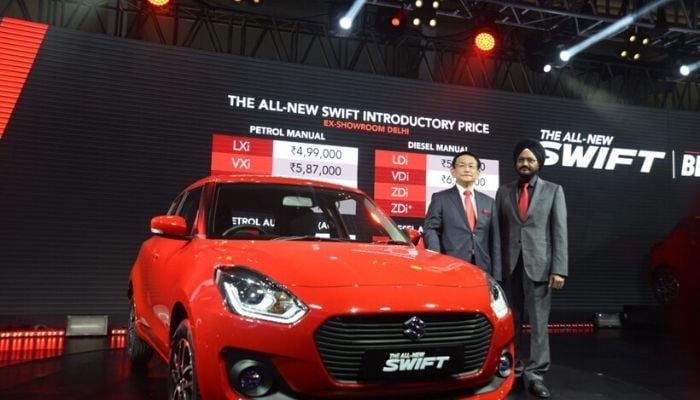Which is better: Hyundai Elite i20 or Swift 2018?

Maruti just launched the all-new 2018 Swift at the recently culminated Indian Auto Expo. Another introduction to the premium hatchback segment is from Hyundai. The Elite i20 facelift is now available with updated styling. The Swift has an all-new platform, which is going to enhance the ride and handling characteristics. The car also comes with more cabin and boot space. Elite i20 also has a lot of things going for it. So, let’s see how these hatchbacks fair against one another.
Dimension Comparison
Hyundai Elite i20 is longer than the new Swift. It also happens to be shorter than as compared to the Japanese offering. This translates into more cabin space but also compromises on the headroom in the Elite i20. The Swift is built on Maruti’s Heartect platform and the shorter wheelbase means that the new underpinnings will enhance the handling characteristics of this hatchback. Elite i20 also comes with a higher ground clearance and this means that as compared to the Swift, i20 will offer a more comfortable ride.
| Dimensions |
Hyundai i20 facelift |
Maruti Swift |
| Length |
3985mm |
3840mm |
| Width |
1734mm |
1735mm |
| Height |
1505mm |
1530mm |
| Wheelbase |
2570mm |
2450mm |
| Ground clearance |
170mm |
163mm |
Engine comparison
Petrol engine comparison
Both cars get the same petrol engine options. The Hyundai Elite i20 and the 2018 Swift are offered with 1.2-litre petrol motors which produce 83PS of peak power output. Hyundai’s engine is torquier than that of the Swift and produces 115Nm of torque which is two more than the 113Nm that the Swift’s powerplant churns out. Maruti Swift petrol variants are offered with the option of CVT automatic transmission whereas Elite i20 only gets a manual gearbox. In terms of the fuel economy, Maruti Swift’s petrol variants are more frugal.
| Petrol |
Hyundai i20 facelift |
Maruti Swift |
| Engines |
1.2L |
1.2L |
| Power |
83PS |
83PS |
| Torque |
115Nm |
113Nm |
| Transmission |
Manual |
Manual/Automatic |
| Mileage |
18.6 kmpl |
22 kmpl |
Diesel engine comparison
The diesel Hyundai i20 facelift is more powerful and gets a 1.4-litre engine which produces 90PS of power and 220Nm of torque. Maruti Swift gets the same 75PS, 190Nm diesel engine which also finds its application in a wide range of other Maruti cars. This is the same DDiS motor which was offered in its predecessor and in the first-generation Swift. So, it has been around for a long while or as some would like to call it “is time-tested”. With the Heartect platform and shorter wheelbase, the new Swift will be able to keep up with the i20 facelift. Both engines are mated to manual transmissions but the Maruti’s diesel comes with a 28.4 kmpl fuel economy which is superior to i20’s 22.54kmpl.
| Diesel |
Hyundai i20 facelift |
Maruti Swift |
| Engines |
1.4L |
1.3L |
| Power |
90PS |
75.05PS |
| Torque |
220Nm |
190Nm |
| Transmission |
Manual |
Manual |
| Mileage |
22.54kmpl |
28.4kmpl |
Prices Comparison
The Hyundai i20 facelift is priced at a premium, which is why the 2018 Maruti Swift is Rs. 35,000 cheaper than the Korean carmaker’s offering. The case is opposite when we consider diesel variants of these two cars. Surprisingly, the price difference between the base diesel variants is much narrower. The more powerful base Hyundai Elite i20 is Rs. 14,000 cheaper than the base Swift diesel variant.
| Hyundai i20 facelift |
Rs. 5.34 Lakh (Ex-Showroom) |
| Maruti Swift |
Rs. 4.99 Lakh (Ex-Showroom) |
You must be logged in to post a comment Login